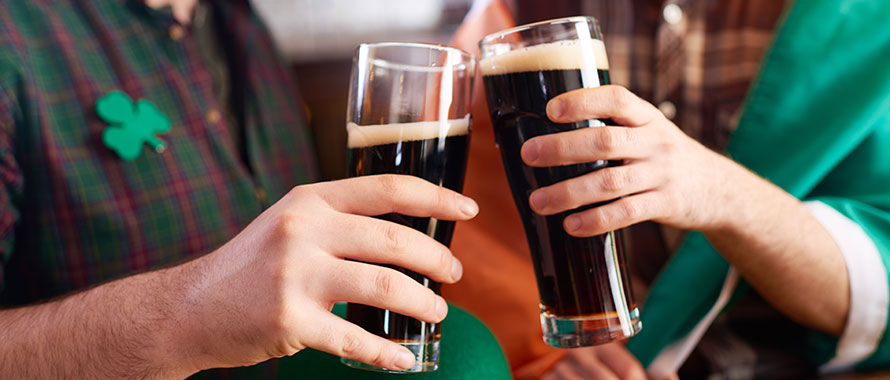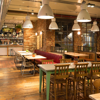After two years of cancellations and uncertainty, crowds are expected to be back in full force for St. Patrick’s Day 2022 in many areas of the U.S. and Canada. Large groups gathered in the streets and in bars for parades last weekend in cities like San Francisco, California, Chicago, Illinois, and Newport, Rhode Island. Establishments are preparing for big crowds this weekend, like an “all-day” celebration March 19 at the Rebel Nightclub in Toronto, Ontario, which will welcome 5,000 guests and is considered the largest St. Patrick’s Day party in Canada.
The possible return to near-normalcy comes amid decreasing COVID-19 case counts and reduced or eliminated rules on masking or vaccination in many areas. “We are just starting to open up now here in Canada, and there are a lot of individuals who are just itching to get out there and have some fun,” said Jeffrey Phillips, Senior Underwriter, Commercial Insurance, Burns & Wilcox, Toronto, Ontario. “It could be pretty crazy.”
While encouraging for the hospitality sector, bar and restaurant owners should keep risk management in mind and review their Liquor Liability Insurance as they prepare for the influx of customers. In California, authorities recently arrested two bartenders and took action against a Santa Rosa area establishment’s liquor license after an underaged man was allegedly served alcohol and later involved in a DUI crash that injured a horseback rider.
Featured Solutions
“Increased traffic on a holiday like St. Patrick’s Day can certainly put more stress on serving staff, who — even if they are fully trained and following the local laws — might still have less time to spend on making sure each individual patron is being vetted,” said William Briscoe, Managing Director, Burns & Wilcox, Birmingham, Alabama. “It can be more difficult to do that when your bar is at capacity. That, in and of itself, is an increased liability factor. This year may have the additional challenge of decreased staff availability.”
Bars can be held liable for auto accidents, injuries from altercations
In both the U.S. and Canada, Liquor Liability Insurance is usually required for any establishment that serves alcohol. It can help businesses cover legal expenses, settlement amounts and other costs linked to lawsuits that are filed due to overserving patrons or other alcohol-related incidents.

The most tragic cases are the ones where an overserved patron gets in a vehicle, has a collision, and someone is killed in the accident. That is the worst-case scenario.
In Hidalgo County, Texas, a man is currently suing the corporation that owns an Applebee’s location where he claims he was overserved alcohol before he got in an auto accident, NBC 23 reported. The accident happened in January of 2020, reportedly leaving the man with permanent cognitive injuries. In Florida, a man is suing a bar in the city of Marianna after his wife was killed by an alleged drunk driver in July of 2019; the man claims that the bar overserved the driver before the accident, WMBB reported.
“The most tragic cases are the ones where an overserved patron gets in a vehicle, has a collision, and someone is killed in the accident,” Briscoe said. “That is the worst-case scenario.”
While overserving or underage serving that leads to an auto accident is one of the top risks faced by these establishments, bars can also be sued for alcohol-related incidents such as altercations between patrons or a fight that occurs after a customer leaves the bar. “The liability can definitely come back on the owners of the bar,” Phillips said. “Usually when these things happen, everyone gets sued.”
With the risk of altercations in mind, establishments should be careful to ensure that assault and battery coverage is included in their Liquor Liability Insurance policy.

The liability can definitely come back on the owners of the bar. Usually when these things happen, everyone gets sued.
“Many times, assault and battery is excluded,” Briscoe said, pointing out the “extremely litigious” environment in the U.S. and the real risk of being sued if patrons are injured in a fight. “Judgment amounts can be millions and millions of dollars; there is no limit to the amount of punitive damages that can be awarded. The biggest areas of liability for these restaurants and bars that have a severely increased traffic count on a holiday like St. Patrick’s Day is making sure not only that the assault and battery piece is taken care of with their Liquor Liability Insurance, but also their Commercial General Liability (CGL) Insurance.”
Liquor liability risk may vary by location
Not all businesses that sell alcohol face the same level of liability exposure, Briscoe said. In the U.S., most states have dram shop laws, which allow businesses to be held liable for overserving individuals or selling alcohol to anyone underage. However, some states do not have these laws. “The laws are so dramatically different from state to state, so exposure really changes depending on where you are,” Briscoe said.

The biggest areas of liability for these restaurants and bars that have a severely increased traffic count on a holiday like St. Patrick's Day is making sure not only that the assault and battery piece is taken care of with their Liquor Liability Insurance, but also their Commercial General Liability (CGL) Insurance.
In Alabama, for example, dram shop laws are “extremely limiting” to businesses that serve alcohol, he said.
“If a patron of a restaurant or bar were to have an accident that injured a third party, that third party could go back to every single vendor in the chain of vendors that served that patron that night and hold them strictly liable for the damages, regardless of how much they actually served, or regardless of how strictly they adhered to the rules guiding bartenders,” Briscoe explained. “The state of Alabama has awarded hundreds of millions of dollars in punitive, indirect injury damages in cases just like that.”
In addition to bars and restaurants, liquor stores and grocers will also usually need to carry Liquor Liability Insurance and could face increased business around holidays such as St. Patrick’s Day. Earlier this month, a jury in Minnesota found that a liquor store in Russell was partly at fault for a 2017 crash involving a driver who was allegedly already intoxicated when he purchased alcohol, the Marshall Independent reported. Late last year, a jury ordered a gas station in South Carolina to pay over $3 million after it allegedly sold alcohol to an underage customer who was involved in a drunk driving accident, South Carolina Lawyers Weekly reported in November of 2021.
Beyond the immediate financial impact of a liquor liability lawsuit, longer-term damage to an establishment is also possible. This could include a temporary shutdown while a liquor violation is investigated, losing its liquor license or facing a negative reputation in the community because of the incident, Phillips said. “The name of your business can get dragged through the papers,” he said. “There are insurance coverages you can get to help with brand rehabilitation and business interruption.”
Prepare for crowds with staff training, additional safeguards
Large crowds in a bar or restaurant on St. Patrick’s Day could also mean a greater risk of patron injuries, with or without alcohol involved. In July of 2021, a man from Yorkville, Illinois, was awarded over $41 million after suing a bar where he was forcibly removed by bouncers. The 2015 incident broke his neck and paralyzed him, WLS-TV Chicago reported.
When third-party bodily injury or property damage occurs, CGL Insurance can cover medical costs and other expenses. However, some policies may exclude forcible ejection, Phillips noted. “If you are an establishment that has bouncers and you are possibly going to be throwing patrons out without calling the police, make sure you have that covered,” he said.
Bars can help keep patrons safe by cleaning up spilled drinks quickly, keeping bathroom floors dry and ensuring outdoor areas are cleared of snow and ice. “Here in Canada, with ice and snow, you need to make sure your driveways and walkways are clear. If someone slips on the ice, that can come back on you as well,” Phillips said. “When you are serving drinks and everything is crazy and loud, a spilled drink, broken glass or other housekeeping items could get overlooked.”

It really comes down to hiring practices, properly trained staff, and due diligence. Promoting that you are trying to help individuals get home safely is always a good thing.
In 2017, after a “precedent-setting” liquor liability suit was filed in Saskatoon, Saskatchewan, bar owners in the area grappled with concerns over when to cut customers off or call them a taxi, the Canadian Broadcasting Corporation reported. In addition to ensuring staff are fully trained and certified, restaurant and bar owners are encouraged to have standard protocols in place for bartenders, including when to call a cab for an intoxicated patron and how to handle patrons who need to be removed from the establishment. Designated driver programs, or incentives for having a designated driver, may also be worth consideration.
“It really comes down to hiring practices, properly trained staff, and due diligence,” Phillips said. “Promoting that you are trying to help individuals get home safely is always a good thing.”
Oftentimes, even well-established bar owners may underestimate their risk of a lawsuit and only seek only the minimum Liquor Liability Insurance coverage — a risky choice, especially in states with the most stringent dram shop laws, Briscoe said.
“They may think their own preparation of their bartenders and servers will keep them from suffering lawsuits, not realizing it may not be their establishment that causes the claim,” he said. “It may not even matter what they did to mitigate their risk at their establishment; the fact that they served the individual can cause them to have the same amount of liability, so they should be seeking the highest limits physically possible.”






